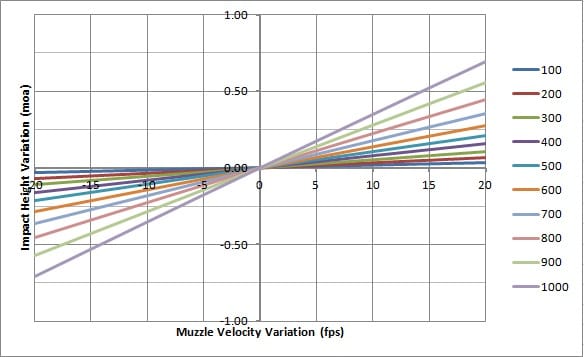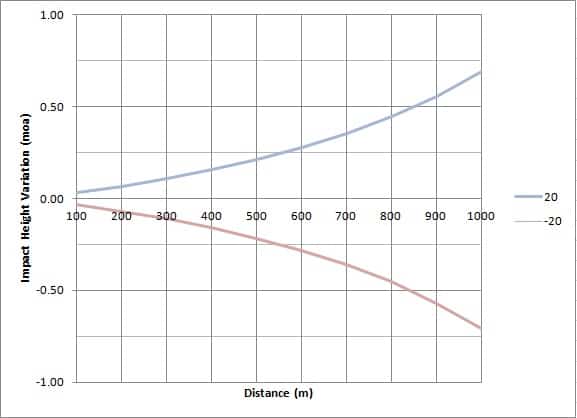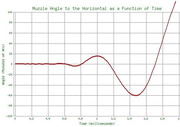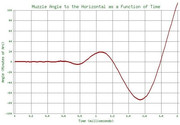So I’ve been thinking about positive compensation and ran some numbers to get a better understanding of positive compensation over various ranges which I thought I’d share.
Using BFX excel addin from http://www.bfxyz.nl/ I created a drop table with the following inputs:
Muzzle Velocity 2900 ft/s
Muzzle Velocity Variation +/- 20 ft/s
G7 BC 0.236
15 degC
101.325 kPa
0% humidity

I subtracted the muzzle velocity drop from the fast and slow velocity drops to give the difference in impact heights. In other words if I’m perfectly zeroed at a given distance with the muzzle velocity, how high or low would the fast or slow shot hit.

I graphed this data in two ways. First I looked at the impact change with velocity change for each distance.

Second I looked at the impact change with distance for the fastest and slowest velocity

What I see from these two graphs is that as distance increases the positive compensation rate required also increases.
So then I looked at if perfect compensation was set up for a given distance what would the impact height be at the other distances. I constructed the table below for the fastest muzzle velocity.

The green cells are where perfect positive compensation occurs and the yellow cells are where the impact height is less than or equal to 0.2 moa. I chose 0.2 moa as it is a little less than half the radius of the smallest ICFRA TR V-Bull.
From this table you can optimise the distances to tune for positive compensation. You can also use this table to setup positive compensation for a difference distance (i.e. test at 200m to see if you've got enough positive compensation for 900m).
I know the conclusions from these numbers and graphs aren't necessarily a revelation, but when I ran the numbers and built the graphs it made what needed to be achieved much clearer for me! So I thought I'd share
If you’d like a copy of the spreadsheet to play with just PM me with your email address. You will need to install the BFX Excel addin.
Now the big question, how do I get my rifle to have the needed positive compensation.......
Enjoy!
Peter
PS - I've got thoughts on the big question, but they're still developing














